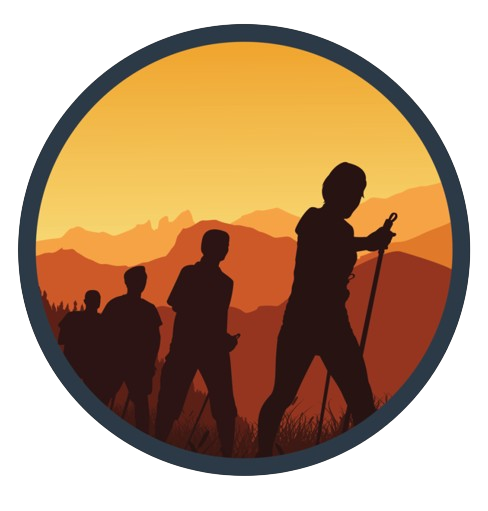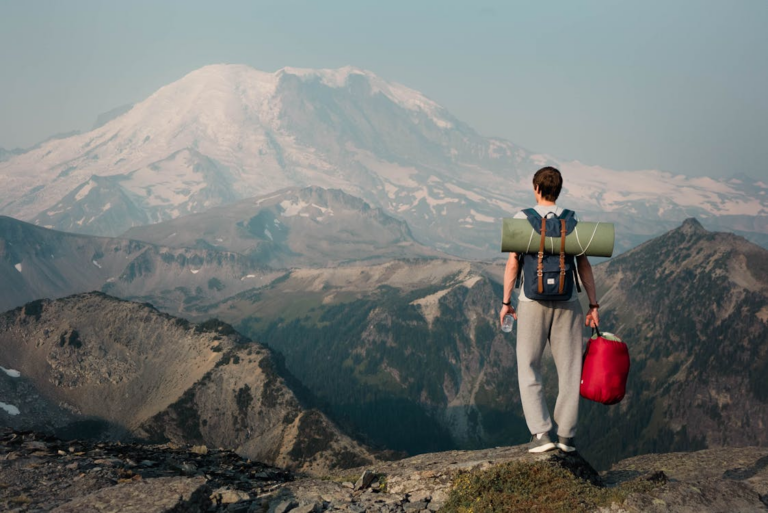QUICK TIPS FOR BEING HIKE READY

1: Remain Calm
Your brain serves as the paramount tool in wilderness scenarios, particularly when faced with challenges. Allowing it to succumb to stress hormones can compromise critical thinking, pushing you into an undesirable “fight or flight” mode that may result in ill-considered decisions.
Consider this paraphrased anecdote from the book “Deep Survival,” one of my favorite works on wilderness survival:
A hiker embarks on a casual day hike along a new trail, captivated by the beauty of nature and losing track of time and direction. As the sun sets, the realization of being lost sets in. Panicking, the hiker attempts to ascend a nearby ridge to regain bearings, expending valuable energy and venturing further into unfamiliar territory.
Back at home, the hiker’s family becomes concerned and decides to contact Search and Rescue, providing a general area where the hiker was expected to be. However, by the time Search and Rescue initiates their efforts, the hiker has moved beyond that region, diminishing the chances of a successful rescue.
Remaining calm and stationary when facing adversity emerged as a crucial lesson from “Deep Survival.” Panic often exacerbates the situation, leading to choices that, in hindsight, appear neither rational nor intuitive. Maintaining a calm mindset enables us to listen to our bodies, understand their needs, and, in most cases, enhance our chances of successfully navigating the challenges before us.

2: Evaluate Your Environment
The ability to craft essential tools, makeshift splints, and various instruments using items commonly found in a wilderness setting is a crucial skill for survival. Simple examples include utilizing a sturdy tree branch to splint a broken arm or gathering dried pine needles for a fire starter.
Constantly assessing your surroundings is a skill you can hone with every moment spent on the trail. Doing so enhances your preparedness for unexpected challenges. For instance, if you find yourself lost, recalling a stream you passed a mile back provides a landmark to aim for and a practical source of water if an unplanned night in the woods becomes necessary.
Furthermore, regularly evaluating your surroundings during a hike creates a mental inventory of landmarks, acting as breadcrumbs to guide you home. Remembering distinctive features like a V-shaped tree or a heart-shaped boulder helps you recalibrate your position, allowing for a more accurate navigation back to your starting point.

3: Develop a Strategy
Many hikers, myself included, have made the mistake of taking action before formulating a solid plan. I’ve experienced it firsthand, and I’m grateful to be able to share my story.
Once, my friends and I got lost on a hike into the American River Gorge near Donner Summit. In our youthful exuberance, after a day filled with hiking, cliff jumping, swimming, and some beer drinking, we made the regrettable decision to “cut off” a few switchbacks.
As we realized we had veered too far off the trail, instead of pausing to think, we pressed on, determined to find a “lookout point” to regain our bearings. Had we taken a moment to consider, we would have hopefully recognized that we were in a vast ravine near the headwaters of the American River.
In our location, the terrain ascended, and the foliage was dense. The chances of finding that elusive “high point” were minimal. Fortunately, luck was on our side that day, and we stumbled upon a small rock outcropping just above the established trail. However, not before expending unnecessary energy navigating through prickly Manzanita after prickly Manzanita.
Halting and devising a plan when things go awry increases the likelihood of taking positive and well-thought-out actions that can improve the situation. Trust me: Blindly taking action, especially when faced with challenges, is a recipe for exacerbating an already precarious situation.

4: Make an Aid Request
There’s often a societal conditioning that makes us feel asking for help is a sign of weakness. However, when the choice is between seeking assistance and facing a grim alternative, it should be a straightforward decision.
For those who enjoy extended periods in the wilderness, carrying communication devices such as a radio, cell phone, satellite phone, GPS unit, or distress beacon is highly advisable.
In times of crisis, having a means to reach the outside world is crucial. Consider investing in a personal locator beacon or a GPS unit with messaging capabilities. While these may require an initial financial commitment, the potential life-saving benefits far outweigh the cost. When faced with the prospect of preserving your life, the value of such communication tools becomes immeasurable.

5: Take Care of Your Essential Needs
When lost in the woods, the natural inclination is often to focus on how to return home. While it’s true that forests were once our ancestral homes, the current emphasis is on a different aspect.
Whether dealing with injuries or a loss of direction, the common assumption is that the best solution is to head back to the trailhead. However, fixating on returning to the trailhead may not always be the most effective use of our mental resources.
Referring back to the earlier story from “Deep Survival,” the hiker in question becomes even more lost, significantly diminishing the chances of rescue and, consequently, survival. If the hiker had stayed near the point of realizing they were lost, they would have been closer to the area where Search and Rescue initiated their search. A robust signal fire likely would have sufficed for the hiker to be located within 24 hours.
In the book, there’s a story about a small child getting lost in the woods. Instead of expending valuable energy trying to “get home” or “find a viewpoint,” the child attends to basic needs. When hungry, he snacks on something from his backpack. When cold, he seeks refuge in a protected root system. By prioritizing basic needs, the child is rescued within 24 hours. Conversely, neglecting these needs can lead to fatigue, delirium, and other complications that ultimately reduce the chances of survival.

6: Use Effective Navigation
Effective navigation is crucial when facing challenges in the wilderness. Whether you’re alone on a hike or evacuating a member of your group, each moment of inefficient navigation can exacerbate your situation.
Personally, I never venture into the wilderness without a physical map of the area I’ll be exploring. Despite the advantages of modern GPS units, I prefer an old-school navigation strategy that doesn’t depend on batteries or satellite signal strength. However, if you opt for a map and compass for wilderness navigation, it’s imperative to have the proper knowledge and skills—consider taking a course to ensure proficiency.

7: Research Before You Go
Thoroughly researching a hike before setting foot on the trail is a crucial step that many hikers overlook. Consider factors such as terrain, potential hazards, weather conditions, and have a well-thought-out emergency evacuation plan for worst-case scenarios.
Gathering as much information as possible about the area you plan to hike is essential before embarking on a day trip or a multi-day excursion. Numerous online resources, such as All Trails, provide valuable assistance in planning and preparing for hiking adventures.
Personally, I find it invaluable to visit local ranger stations to inquire about wilderness area restrictions, recent animal activity, ongoing fire restrictions, and any other insights the rangers may offer. Hearing firsthand from those who have spent their lives exploring and navigating through the wilderness provides an irreplaceable source of knowledge and guidance.

8: Prepare a First Aid Kit.
Ensuring the safety of your hiking party is paramount, and a quick way for situations to escalate from bad to worse is discovering that your first aid kit is either outdated or empty in the backcountry.
Prior to every trip, especially if you’re venturing into remote areas for multiple days, it’s essential to include checking your first aid kit and replenishing any depleted or missing items in your pre-hike checklist. This proactive measure can significantly contribute to your ability to address injuries or emergencies effectively.
For those seeking guidance on the essential items to include in a first aid kit, referring to a comprehensive First Aid Kit List can be helpful in ensuring you have all the necessary supplies for potential medical situations.



